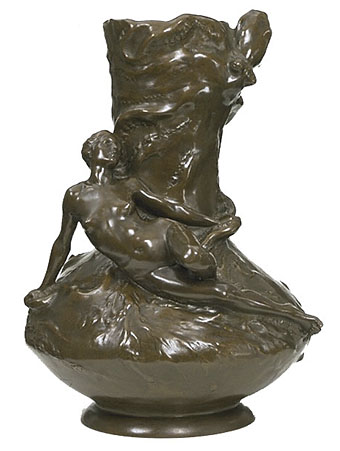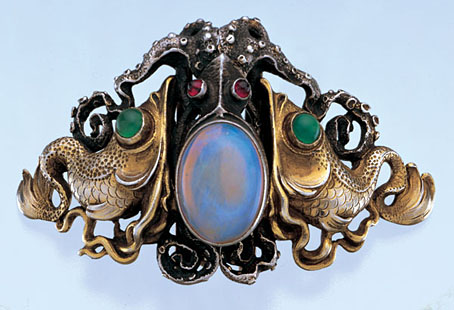
Fob watch (c. 1890) made by Gorham for Tiffany.
Concluding a week of tentacular posts. I was tempted to do something about tentacle porn but that subject has already been covered here, and besides, there’s rather a lot of it around these days. Given the writhing nature of octopus limbs you’d expect there to be far more octopoid Art Nouveau design than there is. The Art Nouveau style was exceptional in allowing the octopus to become a design motif, probably the first time in Western Europe the animal had been given its decorative due since the Ancient Greeks, Minoans and other Mediterranean civilisations used it to pattern dishes and vases. The remoteness of the animal is no doubt one reason it was shunned for so long in northern countries: British sailors used to refer to octopuses as “devil-fishes”, a term that appears in William Hope Hodgson’s fiction. Octopuses in Europe weren’t part of the general culture the way they are in Japan. It took the appearance of Ernst Haeckel’s Kunst-Formen der Natur, published from 1899 to 1904, to bring the aesthetic attractions of the stranger varieties of marine life to a wide audience.

The Prey (1895), bronze by Auguste Ledru.

From Animal Vignettes (c. 1900)

Buckle in silver, gilt, opal, garnet, chalcedony (c. 1900) by Karl Rothmüller.
